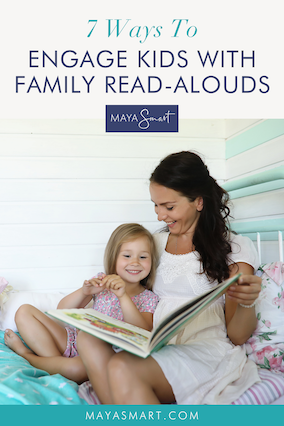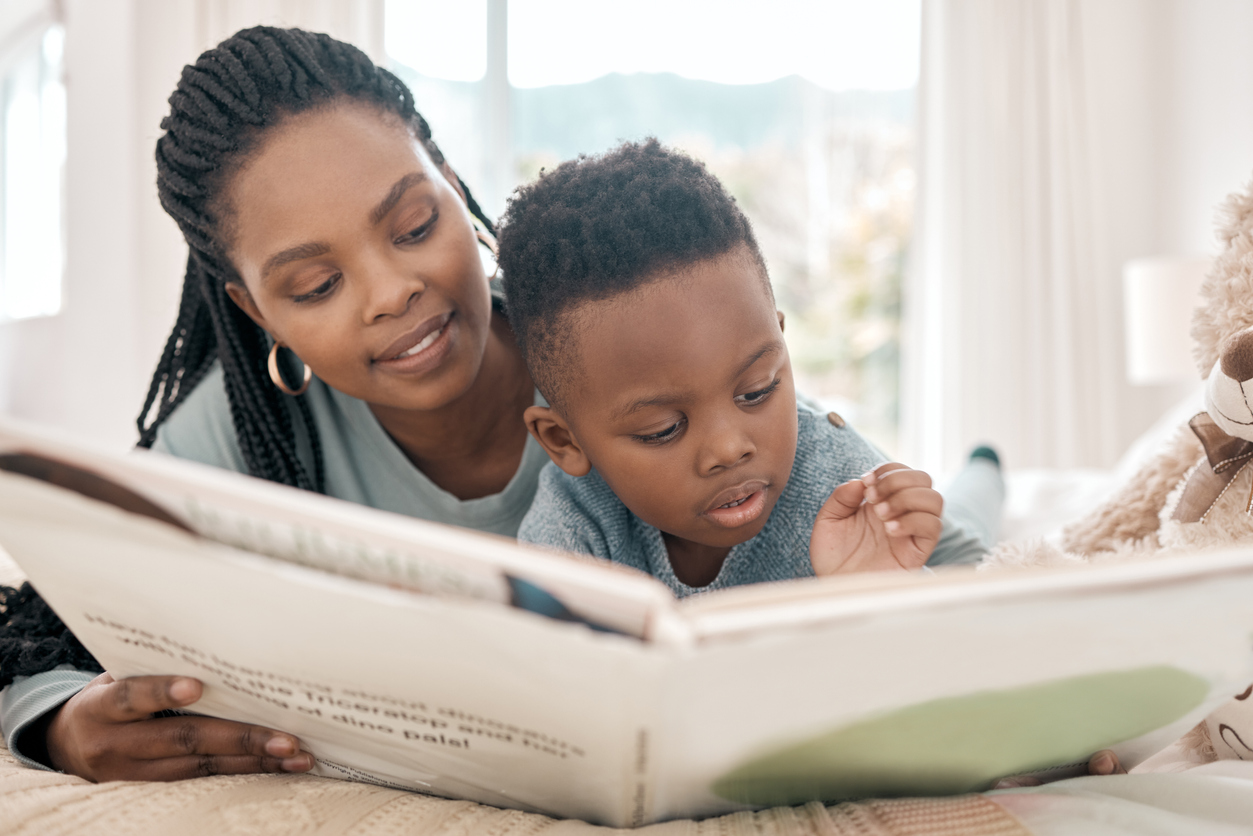From the pediatrician’s office to parenting magazine columns, numerous voices tout the benefits of regularly reading aloud to young children for language development. But storytime quantity is just part of the equation. How parents read to kids (not just how often) matters too, and I don’t mean the pacing and performance qualities of reading aloud. No matter how thrilling the story or a parent’s delivery, a verbatim front-to-back reading of a book leaves out critical brain-building, literacy-boosting power.
A robust body of research dating back to the 1980s positively associates interactive parent-child reading with language-development gains. This is not the one-way speech of a parent holding forth while a child sits quietly enraptured, but rather the dynamic back-and-forth volleying of questions and comments beyond what appears on the page. These little detours and digressions are golden, research shows, because they move parent and child into a realm of greater linguistic complexity and vocabulary diversity than typical conversation does. They get the child thinking, making inferences and predictions, and formulating questions and comments of their own.
Even before kids can talk, there’s tremendous benefit to asking questions and waiting for responses. An infant’s coos and babbles in response to a caregiver’s question are signs of cognitive stimulation and crucial brain architecture formation. (See The Three Best Reasons to Read Aloud to Babies for more details.)
All of this is great news! Purposeful, knowledgeable parents can move the needle for their child’s early literacy by making only minor tweaks to their storytime routines. When mindful, we can pause, point, comment, question, and otherwise elicit responses from kids to make the most of read-alouds’ literacy-building power. Here are seven research-backed ways to capture your child’s attention during storytime and give them all the vocabulary and brain boosts you can.
Point and Trace
Look at that!
The index finger is an incredibly powerful and overlooked tool for bringing kids’ attention to print. Eye-tracking studies show that when left to their own devices, children focus almost exclusively on the pictures in a book, not the lines of type. This means that simply reading—while the child examines the pictures—misses the opportunity to raise their awareness of how letters, words, and written language work. Getting in the habit of tracing your finger under lines of text as you read is a great start for directing the child’s attention. Plus, a simple call to look at a particular object or word on the page is a great tool for engagement.
Label
There’s the teddy bear! That’s a kitten!
To take things up a notch, parents can speak the name of an object while pointing to its picture, so that children begin to associate a spoken word with the image in print. Some research suggests that imagery is enormously helpful for early word learning, as evidenced by the fact that young children tend to learn nouns, which evoke a clearer visual in the mind’s eye, more readily than verbs.
Request Labels
What’s that on his head?
Asking the child to name an object on a book page instead of supplying the label for them nudges them to search their own memory bank, conjure the right word, and speak it aloud. Both practices have their place, depending upon the book’s content and the child’s age or knowledge. But placing the onus on the child to provide the name is thought to stimulate expressive vocabulary.
Ask Five WH Questions
Who has the bedtime bonnet?
What is his grandpa doing?
When will they bake the cake?
Where’s Johnny?
Why does Tamika look so excited?
Who, what, when, where, and why—plus how—questions are always great conversation starters and tend to evoke longer, richer responses than yes/no questions. In a cool naturalistic study that compared two childcare workers’ styles of reading aloud to a toddler named Charlie, there were marked differences in his response to and initiation of speech with each caregiver. He was much more verbose with Pam, who asked lots of WH-questions. Her queries prompted him to use more words and a wider variety of words describing animals, people, and objects. This observational study offers a glimpse into the ways adults’ language choices and discussion styles affect kids’ language practice and development.
Affirm and Expand
Yes, the chocolate cake looks tasty.
Some of the richness of the language that kids experience during read-alouds comes from the sophistication of the text on the page, but a good bit comes from parents’ commentary around the books. This extra talk that veers off script offers more diverse verbs and vocabulary, and lengthier stretches of speech, than recitation of the printed text alone. Plus, it gives children greater opportunity to respond with more conversational turns of their own. Seize openings to model more elaborate responses to questions, showing little ones how it’s done. For example, if a child answers a who-question with just the name Grandpa, a parent could respond with Yes, Grandpa has the pink bonnet.
Relating the Story to the Child’s Life or Experiences
Do you remember when we jumped in puddles outside?
When encouraged by adults, children as young as preschool can relate what they hear during read-alouds to their personal experiences and other books they’ve heard. This comparing and contrasting, reminiscing and reflection all present stimulating opportunities to think abstractly and express themselves.
Respond to the Child’s Questions
Countless parents have grown weary of bedtime reading and long for a quick end to storytime. The stresses of getting a child or two to sleep spawned the profane bestseller “Go the F*ck to Sleep” and a sequel, “F*ck, There Are Two of You.” One survey of more than 1,000 parents found that one-third feel so tired at the end of the day that they skim or “rush read” books to their children. And academic research across continents overwhelmingly cites time constraints as the major barrier to consistent, enjoyable reading with kids. Yet taking the time to thoughtfully respond to kids’ inquiries in the moment is powerful. They are asking because they are interested, so don’t squander a tailor-made opportunity to affirm their engagement and expand upon it. The engagement and dialogue is more important than getting to The End.
Pin Me for Reference :



